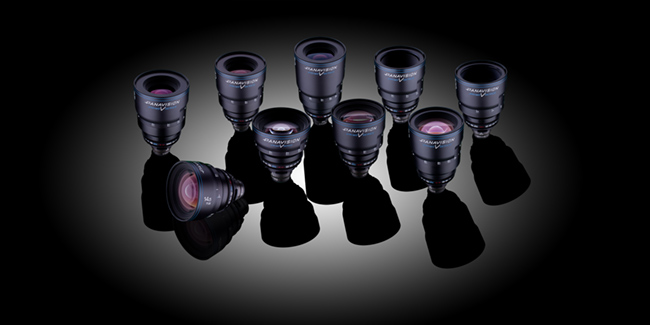
Panavision Launch New Primo Lenses To Counter ‘Sharpness’ of Digital Cinematography
Posted on Nov 12, 2013 by Alex Fice
A set of Primo V primes will include 14.5, 17.5, 21, 27, 35, 40, 50, 75, and 100mm focal lengths.
Panavision has introduced a new line of Primo lenses, the Primo V series, specifically designed to work with today’s high-resolution 35mm digital cameras.
The Primo V lenses are designed to bring the look and feel of Panavision Primos to digital cinematography, using the lens elements from existing Primo lenses that have become an industry standard for top cinematographers.
“Cinematographers tell us that the hyper-sharp sensors in today’s digital cameras can result in images that are harsh and lack personality,” says Panavision’s VP of Optical Engineering Dan Sasaki. “That’s one reason why there’s so much emphasis on glass these days. The Primo V lenses bring the smooth, organic flavor of Primo lenses to the high fidelity digital image. Our philosophy is to take what cinematographers love about the Primos, and update them for the digital world.”
Digital cameras require additional optical elements including low-pass and IR filters that increase off-axis aberrations. ND filters are sometimes part of the chain. Primo V lenses have been re-engineered to correct for this. Patent pending modifications eliminate the coma, astigmatism, and other aberrations introduced by the additional glass between the lens and the sensor, while preserving the desirable imaging characteristics of the Primo otics. The resulting image appears more balanced center-to-edge.
The Primo V lenses are compatible with any digital camera equipped with PL or Panavision 35 mount systems. They cannot be used on film cameras. The internal transports and mechanics of the Primo V lenses will retain the familiar Primo feel. Since the Primo V lenses retain the essential Primo character, imagery from Primo V and standard Primo lenses should intercut well. A set of Primo V primes will include 14.5, 17.5, 21, 27, 35, 40, 50, 75, and 100mm focal lengths.









